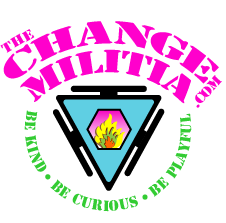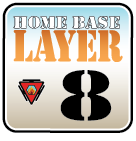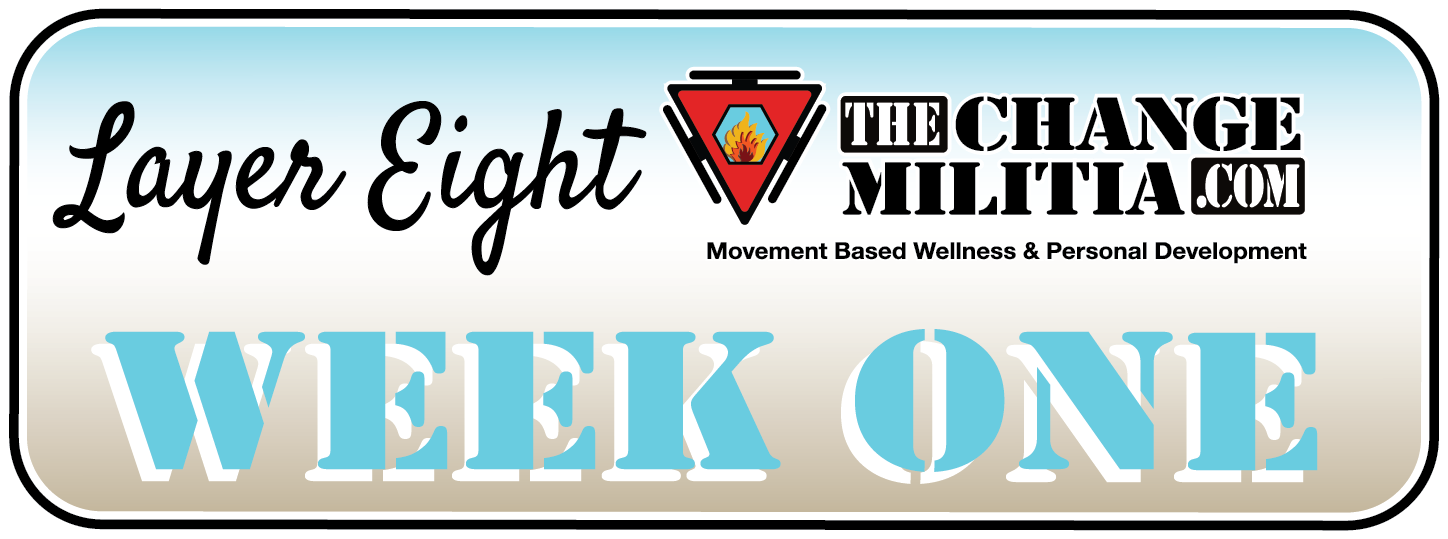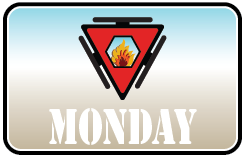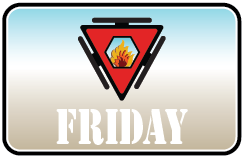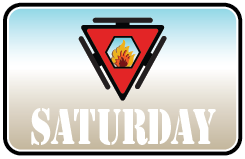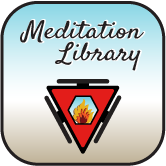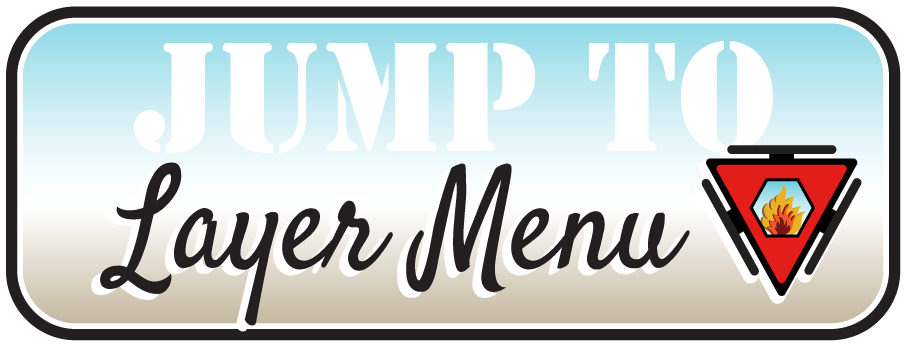Layer Eight, Week One – Sunday
- Read Week One Concepts
- Watch video and read description for Energy Configurations – Compressive
- Do Meditation – Energy Configuration – Compressive and Current150
Sunday’s Focus:
This week we will continue and finish exploring the different energy configurations. Today, feel for your compressive energies. Where do things feel heavy? Where are you stubborn or inflexible? See the video description for more.
Sunday’s Concepts
Let’s review and expand on the definition of empathy from Layer Seven, Week Three:
Empathy – The act of feeling what you are feeling and what is being felt by others or some aspect of the environment. Empathy exists internally and externally. You have empathy for yourself when you feel what some part of your body or bodies is experiencing. (That is the goal of the Current150)
Empathy is your ability to feel energy move or change from one configuration to another.
In the physical world, feeling energy move would be something like the sensation of wind on your face. Heat and cold are energy moving. Heat and cold are usually unseen. Unless it is dusty or foggy, wind is not visible. You feel heat, wind, and cold as a contrast to your existing condition.
I was riding a motorcycle, a mint condition 1987 Yamaha FJ1200, with a 60 mph (100kph) tailwind as I crossed the Sequoia National Forest from Bakersfield to Hwy 395. I could reach my hand out to the side and feel no resistance. It felt like I wasn’t moving. The air temperature was in the mid 90’s (35C) which about matched my own temperature. It was surreal. It was surreal because I had habituated to something completely different. Normally at 60 mph, I am actively resisting the buffeting of the wind. It is pushing at my helmet, chest, legs, and arms. It is a force that I must reckon with.
If you have never ridden a motorcycle, first, you have my condolences, second, try putting your hand out the window of a moving car and change the direction your palm is facing. Be aware of how much tension (muscular stability) is required to maintain any given position. Try to feel the effort all the way up into your shoulder and neck. If your back wasn’t against the car seat, you would also be feeling it in your core, hips, legs, and feet.
As I ride at speed, the adjustments I make are habitual. I alter my posture and actions in response to the environment. The faster I ride, the more energy I must put into my response. The velocity and direction of the wind require a response.
Have you ever noticed how much smoother you drive than your partner? Does he or she seem to brake and accelerate impulsively? That may be true or it may be that when you drive your system predicts the changes and prepares you in advance. You know when you press on the accelerator the g-force will pull you backward and your system responds presumptively. As a passenger, you have no forewarning.
Empathy is the degree you can be the driver. When you are aware of the energy of your environment, your energy systems presume and predict what will happen next and respond accordingly. Your system entrains with the existing energy configurations.
Layer Eight, Week One – Monday
- Read Monday Concepts
- Watch video and read description for Energy Configuration – Transitive
- Do Meditation – Energy Configuration – Transitive and Current150
Monday’s Focus
Focus on changing energies today. What in your life feels like it is in some sort of transition? How aware are you of the typical and every day opportunities that you overlook? Where do your habitual movements (transitions) mask more beneficial options? How aware can you be of your changing energy configurations and the changes happening in your environment?
Monday’s Concepts
The person who pointed out to me that I was an empath used the following example to a group of people sitting around a dinner table. He started talking about his drive to the retreat center where we were and how he did something that he was ashamed of. He wouldn’t say what it was, just that he was ashamed. I found myself crying. I could feel his shame and my body responded by aligning my energy configuration with his. I was feeling what he was feeling without having any specific context and without feeling any personal shame.
To be empathetic is to respond synergistically to moving energy.
If I was already feeling shame in my body, I would have had a different response. There wouldn’t have been such a transition. I may have felt a little more shame or a little less. If I was feeling more shame than he was, his shame would have seemed minor. If my relationship to shame brought about anger in my system, his story probably would have evoked anger, condemnation, and/or judgment.
The retreat setting, happily sitting around a dinner table with a bunch of loved friends, provided a stark contrast. I felt happy, content, accepted, and welcomed. The empathic communion with his grief was startling. I wasn’t ready for it. I didn’t expect it. It happened almost entirely outside of my conscious mind. One minute I was listening to him share and the next tears were falling down my face.
Those two weeks in the coastal forests south of Santa Cruz changed my worldview and my life. I realized I had talents that were undeveloped, that I had the potential to help people, and I realized most pain was self-inflicted.
I understood that I could not be a very good judge of other’s energy until I understood my own.
Layer Eight, Week One – Tuesday
- Read Tuesday Concepts
- Watch video and read description for Energy Configuration – Fluid
- Do Meditation – Energy Configuration – Fluid and Current150
Tuesday’s Focus
The energy configuration you are striving for is fluid. When do you feel like you are matching the rhythm of your internal and external environment? Under what circumstances do you find yourself centered and balanced with momentum? Where and when do you have the least resistance? Read more in the video description!
Tuesday’s Concepts
The opportunity you have is to get to know your energy configurations so that you can feel the contrasts, stark and subtle, between you, others, and your environment. As you become aware and then acknowledge your own energetic resistances, you will feel how you limit your capacity to be kind, loving, successful, fulfilled, happy, and intimate. You will feel how energetic configurations limit your expression, lead to reaction, and can stifle your ability to act.
When your discernment increases, your awareness increases. Elevated awareness cultivates depth in your connections. As you deepen your connections, opportunities will be more perceptible. As you act on your increased opportunities, everything will feel effortless.
Here is an example from the other night. We had a get together at our house with some friends. One couple brought their three children, ages 7,9, and 11. We made homemade pizza. Kelly and I love the kids. We have shared a few meals and hung out with them a couple of times. The kids are very comfortable, outgoing, and playful. We meet them where they are as equals. We don’t have any expectations and encourage them to be themselves. If they are on the floor playing, we get down and play with them. We engage with them fluidly and effortlessly.
The result is that they engage with us. They feel welcome. We cultivate the energy of affection and acceptance. They blossom and their parents relax. Our lack of demand or expectation gradually lowers everyone’s defenses.
Understanding energy configurations and then cultivating fluidity will add incalculable value to your life, to the lives of your loved ones, friends, family, neighbors, and associates. Your fluidity will be water to a thirsty garden. Empathy stimulates collaboration, collaboration engenders intimacy, and intimacy awakens deep, meaningful connections.
Layer Eight, Week One – Wednesday
- Read Wednesday Concepts
- Watch video and read description for Energy Configuration – Percolating
- Do Meditation – Energy Configuration – Percolating and Current150
Wednesday’s Focus
Percolating is the energy configuration you will be exploring today. What’s bubbling up for you? How impatient are you? What is brewing in your mental and emotional cauldron? What inner desire is starting to whisper? What pain is just at the edge of your consciousness? What held energy, thought, or emotion feels like it is starting to move?
Wednesday’s Concepts
The Current150 you have been doing will begin the process of understanding, feeling, and encouraging empathy. It will start when you identify the energy present in each of your bodies. As you get better at identifying the configurations present, you will feel how your bodies usually configure differently. That difference might be subtle or drastic. The imbalances may conflict or collude. One body may be moving toward centered fluidity and another away.
Let’s take my current configuration as an example: Overall, I would label my energy as fluctuating. My ability to focus seems to be fading in and out. I am productive, but my productivity is variable, minute-to-minute.
My physical body configuration is fluctuating and bleeding energy. I have been feeling nauseous since my morning exercise and the intensity of those sensations rise and fall.
My emotional body feels scattered and accumulating. I am feeling emotionally chaotic and it feels like the pressure of that frenetic energy is building. I don’t have a sense of what the emotion is that is building, but my guess would be the fear of getting sick and the fear of not getting anything done.
Mentally, my thoughts are expansive, isotonic, and a little scattered. I can create content but am prone to distraction. Creating content seems to be struggling with the pull toward distraction but I am still able to move forward.
Energetically, my Mojo feels fluctuating, scattered, and like it is accumulating. I feel the energy building in my throat and temples. The energy around my diaphragm and stomach feels chaotic.
My relational body is somewhere between stagnant and expansive. I am alone in my office but feel the connection my words will have to you and I feel my connection to our community, but those energies are sluggish and dull.
Layer Eight, Week One – Thursday
- Read Thursday Concepts
- Watch video and read description for Energy Configuration – Scattered
- Do Meditation – Energy Configuration – Scattered and Current150
Thursday’s Focus
Love and hope and sex and dreams, I’ve been scattered! (Sorry for the poetic license, Mick). Where is your focus shattered? Where do your intentions for the day fragment into distractions? When do your stories and dramas get so involved and energized that they split your intentions into divided and divergent trajectories?
Thursday’s Concepts
Notice that the descriptions I gave were sensorial, not judgmental. There were statements without value. I am determining and evaluating my actuality. If I have a dozen lemons, I can label them as small, medium, or large (subjective) or I can record their actual size (non-subjective). When you are curiously examining your energy configurations, try to get to a place where you can do it non-subjectively.
Here is what I can do with the above information. First, I can evaluate the degree of balance, optimal energy, in each body. Which body feels overcharged and which undercharged (subjective) or what percentage of balance is each (non-subjective)? To rebalance, I will create some degree of equanimity between the bodies.
Subjectively, my physical body feels undercharged, say 5 with 10 being normal or typical. Emotionally, I feel overcharged, a 15. Mentally, 7. Energetically, maybe an 8 that is moving toward a 9. My environmental body is probably a 4.
To regain balance will require me to elevate and balance the energies in my physical (5), mental (7), energetic (8), and environmental (4) bodies.
It will require balancing my emotional body (15) by reducing the energy it is consuming and allowing the energy to flow and moderate.
I will maintain and increase my overall balance by balancing the energies of my bodies and then elevating them all together.
Feel into this for yourself. If you are anxious or overwhelmed, your mental body is overcharged. To regain balance, moderating your mental body makes sense. If you are emotionally volatile, lowering your emotional energy will help you feel more balanced. If you are physically stagnant, exercise will help you feel more like yourself. You are looking to bring an optimal amount of energy into each body and each component.
Layer Eight, Week One – Friday
- Read Friday Concepts
- Watch video and read description for Energy Configuration – Accumulating
- Do Meditation – Energy Configuration – Accumulating and Current150
Friday’s Focus
Spend the day feeling how energy accumulates in your system, the systems of others, your relationships, and your environment. How do you rejuvenate and what does it feel like? What do you do and whom do you do it with that leaves you feeling fuller?
Friday’s Concepts
Centering and balancing your bodies will be a practice. You will get lots of methods, movements, and meditations in the weeks to come. Being centered and balanced will be a juggling act.
Physically, if my energy is low, I can do something to increase it. Something as simple as rest, singing, or a quick walk around the block.
Emotional balance can improve with meditation, rest, or some personal interaction. If I am emotionally scattered, meditation and conversation will be centering. When I am scattered and accumulating, conversation will bring my emotional energy into focus and give it some place to go.
Mentally, increasing the blood flow and oxygen to my brain usually helps. That means physical movements, breathing exercises, or vocalizations. I will look to find something that will create momentum that my mind can entrain with.
To soothe and balance the energy in my subtle body, I will do some physically fluid movements or a Kriya (energy rotation). Every movement from all the weeks in Layer Three are Kriyas. Other movements would be things like Tai Chi, Taoist Yoga asanas, rhythmic full body dancing, or any martial-arts forms or katas.
Rejuvenating my environmental body would be as simple as being social with someone or people that I resonate with. Calling a friend or family member, being socially effusive with people I meet on the trails, or going for a mountain bike ride with a friend. And it doesn’t require people. Hug a tree, pet a dog, dig in the dirt, feel the texture of rocks; anything that allows you to connect your inner body to the outer world in a loving and curious way.
Layer Eight, Week One – Saturday
- Read Saturday Concepts
- Watch video and read description for Energy Configuration – Centering
- Do Meditation – Energy Configuration – Centering and Current150
Saturday’s Focus
The last energy configuration and the most valuable is centering. Centering is the art of regaining balance to increase fluidity and accessibility. What choices can you make today that will bring you closer to your optimal levels in each of your bodies?
Saturday’s Concepts
When I take each of my bodies individually, it becomes a pretty simple and quick task. I don’t let myself bog down in any stories, blame, recriminations, history, or projections. I gauge my actuality. I look at myself in the moment, and begin the process of finding optimum by getting balanced and centered. I respond to my imbalance by making a series of decisions that will move me toward my current best.
You will take that model and apply it to yourself, your family, relationship, and career. You can use it for your goals, trajectories, and to maintain the integrity of your highest aspirations.
Using our friend’s kids as an example … they hadn’t been to our house before, didn’t know who else would be there, and didn’t know what to expect. They were a little unsure, tentative, and apprehensive. Their uncertainty created an imbalance.
Kelly and I configured the energy in our bodies in a way that mitigated their uncertainty. Our energy offset their imbalance and allowed all of us to create a fluid, balanced interaction.
Once they achieved balance (relaxing and expanding into the potential), the energy in the entire house started to expand. It got lively, playful, fun, and fulfilling.
Put simply, we were welcoming in a way that their system could adapt to. Our empathy led to resonance which became lyrical. The energy became music and dance.
Empathy will give you the ability to influence your body and your environment in increasingly beneficial ways. Empathy will give you a fuller understanding of what is holding you back, what is holding others back, and the tools to remove those impediments.
Empathy is the path from potential to opportunity. You beneficially influence others by being accepting and offering options that they don’t initially perceive. With study and practice, empathy will allow you to configure your energy in a way that influences the energies around you in ways will bring about a relaxed and fluid confidence. As you accept yourself and learn to accept others, defenses will lower, collaboration will increase, and playful, effortless success will ensue.
Empathy is how you will change the world from the inside out.
Energy Configurations – Compressive
Step 1 – Find a comfortable seat, take a few deep breaths, and allow yourself to settle and relax.
Step 2 – Breathe normally and as effortlessly as possible while you begin to become aware of what things in your life and bodies feel compressed or condensed.
Step 3 – You are looking for the beliefs, instances, situations, or relationships where you are stubborn, inflexible, or judgmental?
Step 4 – Where do you deny or ignore opportunity, alternatives, or other points of view. Where do you see the world as black and white?
Step 5 – Physically, where do you have tension? Where is your range of movement limited? Where do you feel pressure?
Step 6 – What habits, practices, conversations, or relationships feel labored or overwhelming?
Step 7 – Where and what in your life feels like there is ample energy without movement?
Step 8 – What emotional energies (dramas and traumas) are still a part of your life? Can you feel those energies as compressed and unmoving?
Why it Matters – Compressed energy is not available for use and becomes a drag or anchor on everything you do. Liberating and emancipating your compressed energy will increase your capacity, lower your persistent resistance, and lighten your feelings of burden.
Everyday Usability – Releasing compressed energy will be your internal Red Bull without the caffeine and sugar hangover. Identifying, acknowledging, and releasing tension will lower your levels of stress and overwhelm.
Progression – Compressed energies are the buried treasures in your life. As you can find and recover them, you will enrich your life. You will be more playful, quicker to laugh, and much more fun to be around.
Energy Configurations – Transitive
Step 1 – Find a comfortable seat, take a few deep breaths, and allow yourself to settle and relax.
Step 2 – Breathe normally and as effortlessly as possible while you begin to become aware of how and when the energies in your life and bodies change or transition.
Step 3 – Physical transitions would be things like moving from one physical state to another awake/sleepy, energized/dull, active/passive, loose/tight, alive/dead. If you are running, the energy in your legs may transition from strong to fatigued. Getting a second wind is a transition from fatigued to enlivened.
Step 4 – Where are you unaware of changing opportunities or alternatives?
Step 5 – Environmental transitions would be night/day, calm/windy, inviting/repulsive, teasing/sarcastic, loving/indulgent. Any change in the feel, flow, or configuration of a relationship will go through a transition. Attentive and distracted are another great example.
Step 6 – Shifting from comfortable to uncomfortable is something that is constantly happening.
Step 7 – Where and what in your life feels like it is changing? What are the current configurations and what happens when they change?
Why it Matters – The transitional energy configuration is change. The sooner you are aware of change, the more options you will have. Minor changes only require minor corrections. Staying centered, optimal, and balanced will happen more regularly when you are aware of the subtle changes that either pull you toward or away from the most fluid and advantageous configurations.
Everyday Usability – The ability to discern transitions will directly correspond to your ability to identify new opportunities and potentials. Internally, feeling some aspect of yourself shift will always be an indicator that you are moving toward or away from fluidity and balance.
Progression – First you will learn to identify transitions, then you will increase your subtle awareness of transitions and perceive change earlier. Eventually, you will feel the energy shifting over more complex configurations.
Energy Configurations – Fluid
Step 1 – Find a comfortable seat, take a few deep breaths, and allow yourself to settle and relax.
Step 2 – Breathe normally and as effortlessly as possible while you contemplate what in your life feels effortless. Where do things flow for you? When do you feel like you are matching the rhythm of your internal and external environment?
Step 3 – Under what circumstances do you find yourself centered and balanced with momentum?
Step 4 – Where and when do you have the least resistance?
Step 5 – How does your resistance limit your ability to connect completely and fluidly with others or your environment? Resistance limits and inhibits fluidity.
Step 6 – What are your ranges of motion and ranges of emotions. Where are you mentally open to every possibility?
Step 7 – What do you judge as conceivable and how does that limit your potential and ability to identify opportunity? Any self-imposed limits will hamper fluidity. Any value you give to others’ demands or expectations will inhibit your ability to be fluid.
Step 8 – How balanced and vital are each of your bodies and their corresponding components? Fluidity will happen when the components in each of the bodies are at their optimal levels and resistance is low.
Why it Matters – Fluidity is the goal. Understanding why it doesn’t exist allows you the opportunity to change your configurations, behaviors, and beliefs to align in a centered and balanced way. Identifying your resistance and the imbalanced configurations in each of your bodies and components will give you the answers you will need to attain and maintain fluidity. As you are fluid, happiness, success, and fulfillment will become effortless.
Everyday Usability – Monitoring your relative fluidity is a great way to stay efficient and productive. Ask yourself if you feel a fluid connection to yourself and your environment and if not, ask yourself what you could do to get back in the flow.
Progression – Simple fluidity will grow to more complex fluidity. A beginner at any sport will feel an initial fluidity as they adapt to the basics of what they are doing. As they gain experience, they will be able to add complexity to their movements and retain their fluidity. Mastery and expertise happen when your expression has depth, breadth, and still flows effortlessly.
Energy Configurations – Percolating
Step 1 – Find a comfortable seat, take a few deep breaths, and allow yourself to settle and relax.
Step 2 – Breathe normally and as effortlessly as possible while you feel for what energies in your bodies or life might be just beginning to move. Where does the energy feels like it is bubbling up?
Step 3 – What urges do you feel during the day. Can you feel how they are silent and then gradually try to get your attention?
Step 4 – Frustration, anger, and impatience usually begin as a percolating energy. They are in some sort of stasis and then they start to build.
Step 5 – Restlessness percolates up from a place of contentment.
Step 6 – Desire for change may erupt but it usually percolates and gradually gains momentum.
Step 7 – Play with listening to your bodies and your environment and search for whispers.
Why it Matters – Percolating energies are harbingers of change. Intuition is the recognition of percolating energy at least half of the time. You consider a possibility and realize it is resonate. What it is resonating with is some percolating energy in your system.
Everyday Usability – Feeling yourself percolate is a great way to build your subtle awareness. Mental percolation may signify some change in belief or a pending creative idea. Emotional and energetic percolation happens when some held energy starts to move. Environmental percolation happens when the energy of any relationship begins to shift.
Progression – The progression of your ability to discern subtle changes beginning will allow you to encourage beneficial change by increasing your attention (physical, mental, and emotional). Increased attention will accelerate change. Identifying non-beneficial percolation will allow you to alter or release some held energy before it becomes a distraction.
Energy Configurations – Scattered
Step 1 – Find a comfortable seat, take a few deep breaths, and allow yourself to settle and relax.
Step 2 – Breathe normally and as effortlessly as possible while you feel for places in your life, body, thoughts, and emotions that feel fragmented.
Step 3 – What is going on for you that feels disjointed in your body, mind, emotions, and relationships? Where do you feel separated or disconnected?
Step 4 – Where do you feel off-center or lack rhythm?
Step 5 – Where is your attention pulled in multiple places. Where do your worries distract you?
Step 6 – When do your stories and dramas get so involved and energized that they split your intentions into divided and divergent trajectories?
Step 7 – Where are components in your bodies not aligned?
Step 8 – Where do you lack presence because your mind lacks focus.
Why it Matters – Scattered energies are a sign that you are actively engaged in multiple distractions. As you can identify scattered and then the aspects of your components and bodies that are contributing to your imbalance, you can act to center and balance your energies.
Everyday Usability – When you feel scattered, you are in an active state of multiple distractions. Recognizing and acknowledging your various distractions, you can address them individually. Ascertain which are actual places where you want to put your energy and which are projections or stories that limit your ability to be productive, present, and efficient.
Progression – As you regularly reduce your scattered energies and remain more focused, scattered will happen less often. Your degree of scattered will also lessen. You will identify scattered when your energy is in fewer segments and it will be easier to regain focus.
Energy Configurations – Accumulating
Step 1 – Find a comfortable seat, take a few deep breaths, and allow yourself to settle and relax.
Step 2 – Breathe normally and as effortlessly as possible and feel where in your bodies you might be taking in more energy than you are expending.
Step 3 – Accumulation usually happens when one or more of the bodies is soft or relaxed.
Step 4 –Rejuvenation and revitalization are accumulating energies.
Step 5 – Can you feel how your energy builds when you feel affection?
Step 6 – Feeling love accumulates energy before or as it expands.
Step 7 – Accumulating energies initiate action and become fuel for movement.
Why it Matters – Accumulating energy is like putting money in the bank, potatoes in the cellar, or adding members to your movement based wellness and personal development program. Energy that accumulates becomes fuel, sometimes lots of fuel. That fuel can promote and sustain beneficial movement. Accumulated energy can be used to invigorate and nourish beneficial change.
Everyday Usability – Everything you do, think, and feel require energy. The more you have, the more you can do. Your life is full as a reflection of your capacity. You grow your capacity by accumulating energy.
Progression – Energy accumulation is a function of habit and opportunity identification. You gather energy in familiar ways and with habitual efficiencies. You can increase your capacity by increasing your efficiency and finding new opportunities to harvest and absorb energy. Your capabilities reflect your available capacity.
Energy Configurations – Centering
Step 1 – Find a comfortable seat, take a few deep breaths, and allow yourself to settle and relax.
Step 2 – Breathe normally and as effortlessly as possible and feel where in your bodies you might be moving toward balance.
Step 3 – How, when, why, and where do you or can you bring energy together to increase its accessibility?
Step 4 –How do you regain your balance?
Step 5 – If you are out of balance now, which body is most imbalanced and what can you do to address specific imbalances to increase your overall balance?
Step 6 – Centering is the movement of energy toward your optimal configuration.
Step 7 – Centering energies will have less resistance, they will feel in-line with your optimal states.
Why it Matters – One of our goals for you in this program is to elevate your presence, awareness, capacities, and capabilities. You will accomplish this by moving from your imbalances and inefficiencies toward fluid. As you can identify centering energy configurations, it will be much easier to feel the non-centering energy transitions.
Everyday Usability – Centering is the feeling of relaxing, rejuvenating, and luxuriating in your own brilliance. There is an inherent self-affection and self-appreciation when you center. As you feel this internally, it is easier to share and radiate to others.
Progression – Centering is like rounding off to the nearest number. At first, it might be whole numbers (1, 2, 3) but as our skill improves, you will round off to the nearest tenth (0.1, 0.2, 0.3). As your mastery of self-optimization increases, it will influence your environment to a greater degree.
Current150
Step 1 – Find a comfortable seat.
Step 2 – Allow yourself to settle, your mind to quiet, and breathe normally.
Step 3 – You are going to do a Current30 for each of the five bodies.
Step 4 – Pick a body. (physical, mental, emotional, energetic, or environmental)
Step 5 – Take a quick snapshot and put a label to the overall or general state of your selected body.
Step 6 – Allow yourself to spend some time exploring the chosen body.
Step 7 – Pick a second body, take a quick snapshot, put a label on it and then spend some time exploring.
Step 8 – Pick a third body, take a quick snapshot, put a label on it and then spend some time exploring.
Step 9 – Pick a fourth body, take a quick snapshot, put a label on it and then spend some time exploring.
Step 10 – On the last body, take a quick snapshot, put a label on it and then spend some time exploring.
Why it Matters – This meditation, like the Current30, will be a gateway to deeper movements and meditations. It will help you ascertain where your energy is and what it might be doing.
Everyday Usability – If you were only going to do one meditation for the rest of your life, this might be the one. This simple meditation embodies presence, vitality, and awareness. Use this whenever you want to get deeper, fuller, and more connected.
Progression – This practice creates its own progression. When you do it consistently, things change. Perceptions, your views, and relationships to the world will alter. An analogy would be knowing only radio and then being introduced to black and white TV, then color TV, and then IMAX 3D. When you knew only radio, it felt amazing and magical and IMAX 3D would have been inconceivable. Where ever you are in the development of your subtle awareness and personal development, know that there is something beyond. It won’t be long before TV and computer screens cease to exist as holographic projection devices replace them … which will be replaced by content transmitted directly into the brain.
